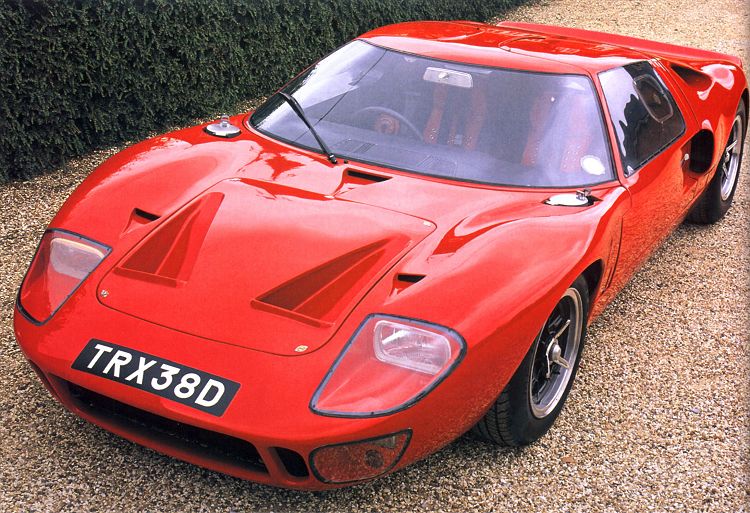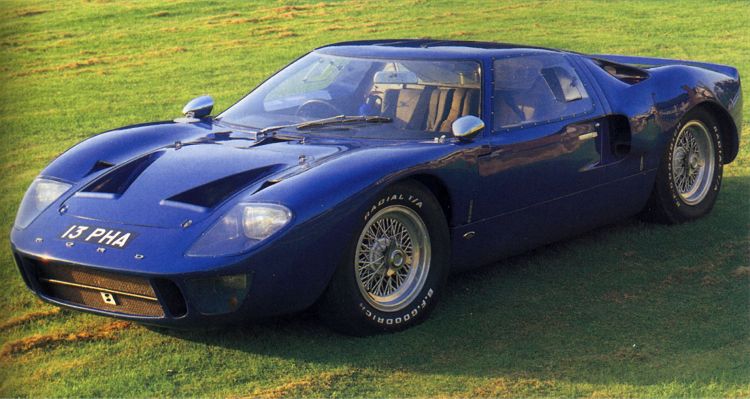Description
The Ford GT40 Mk II Street was the road-going version of the legendary Mk II race car, a machine that etched its name into history by delivering Ford its first victory at the 24 Hours of Le Mans in 1966. Where the Mk I had pioneered the concept, the Mk II built upon it with more power, greater durability, and a stronger American influence in its engineering. A handful of Mk II chassis were built or later converted for road use, creating some of the rarest and most fascinating supercars of the 1960s.
From the outside, the GT40 Mk II Street retained the striking, low-slung silhouette of the race car. At just 40 inches tall, its roofline remained astonishingly low, with wide haunches, a long nose, and sculpted bodywork that made it look every inch the endurance racer it truly was. Differences from the pure competition cars were subtle but important: smoother finishes, functional lighting, and slight refinements to make the cars legal for road use. Still, the Mk II Street was far from a conventional car—it looked and felt like a Le Mans contender, even when parked on city streets.
Inside, the Mk II Street was only marginally more civilised than its racing siblings. The cockpit remained compact, with wide sills that made entry and exit difficult and a seating position that placed the driver almost horizontal beneath the sloping windshield. Leather or upholstered bucket seats replaced the spartan racing shells, carpeting covered the bare floors, and additional gauges such as a speedometer were fitted alongside the race-spec dials. Some cars received small concessions to comfort like sound insulation or a heater, but the experience was still overwhelmingly that of a race car adapted for the road.
The defining feature of the GT40 Mk II Street was its engine. Unlike the Mk I’s small-block V8s, the Mk II carried Ford’s mighty 427 cubic inch big-block V8, the same engine found in NASCAR stock cars of the era. In race trim, it produced over 485 horsepower; in detuned form for the street, output still exceeded 400 horsepower, paired to a rugged four-speed Kar-Kraft-built gearbox derived from racing applications. The combination of massive torque and lightweight construction meant breathtaking performance, with top speeds approaching 200 mph and acceleration figures rivaling the best exotic cars of the 1960s.
On the road, the Mk II Street was thrilling but demanding. The big-block engine dominated the driving experience, producing immense power and a thunderous soundtrack. The car’s handling remained razor-sharp, thanks to its mid-engine layout and racing suspension, but heavy steering, limited visibility, and the raw nature of the powertrain made it far from practical for everyday driving. It was a machine for enthusiasts who wanted a true race car with number plates, not a refined grand tourer.
Only a handful of GT40 Mk II Street cars were ever completed, making them exceptionally rare today. Some were finished as road cars by Ford Advanced Vehicles or Kar-Kraft, while others were later converted by collectors or specialists. Their rarity, coupled with their direct connection to the Le Mans-winning racers, ensures that they are among the most valuable and desirable classic cars in existence.
Today, the Ford GT40 Mk II Street is revered as both a technological marvel and a piece of motorsport history. It embodies the peak of Ford’s determination to dominate endurance racing, while offering a glimpse of what it meant to tame a Le Mans-winning machine for the road. Few cars capture the spirit of the 1960s racing wars as vividly as a GT40 Mk II with license plates, and it remains one of the ultimate expressions of American muscle blended with European engineering finesse.

